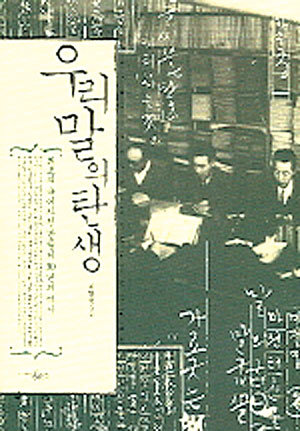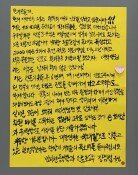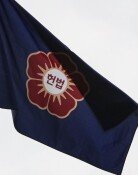1957 Dictionary Was Catalyst for Hanguls Rebirth
1957 Dictionary Was Catalyst for Hanguls Rebirth
Posted October. 08, 2005 07:57,

On September 8, 1945 the chief of the Kyungsung Station (current Seoul Station) was looking at the Joseon Transportation Warehouse. He stopped in front of a large box and cried out, This is it.
He just remembered the Joseon Language Society who was anxious about getting a copy for the Korean dictionary. The chief of the station called the Joseon Language Society.
The call was in regards to the 26,500-page original draft of the Big Joseon Language Dictionary that started being written in 1929. The copy was seized by the Japanese in 1942 with the Joseon Language Society case as evidence and was missing ever since. It was in this very moment that the long-lasting copy finally came back to the arms of the Joseon Language Society.
Two years later, on October 9, 1947, the Joseon Language Big Dictionary, Volume One was published. Ten years later, in 1957, the Big Dictionary publication completed with a total of six volumes. It was the first time a Korean Dictionary was created.
It took exactly 50 years from 1907 until 1957, beginning with when the Korean Language Center was created and discussions began regarding the necessity of publishing a Korean dictionary. How much longer would we have waited if the copies were not found at Seoul Station?
This book contains the complete 50-year history of the making of the dictionary. The writer is a Korean language department professor of Wonkwang University. In a documentary fashion, he writes of the difficult process of making the dictionary during Japanese colonial rule leading up to liberation, the people who dedicated their lives to researching and protecting our language, and of the diverse controversy over compiling a dictionary. This can be seen as the first ever compiled history book regarding the Korean dictionary.
The writer emphasizes, Hangul (Korean) was born sound again by having a decent Hangul dictionary published. That is why he titled the book, The Birth of Our Language.
As a matter of fact, there were Korean dictionaries before 1957. However, they were all small dictionaries and had not been compiled well. The writer says, The Big Dictionary published in 1957 was created with the efforts of many people, by an organization recognized by the people (the Joseon Language Society and the Hangul Academy), and became the benchmark for other dictionaries to be made, and that is why it is a true Korean dictionary.
While reading the book, one can see that the 50 years of the dictionary-making represent a history of protecting our culture and of finding our independence and self-esteem. In particular, the story of people who dedicated their entire lives to the compiling of the dictionary, is very moving.
Lee Sang-chun was a Joseon language teacher at Songdo High School in Gaesong during the Japanese colonial era. Sensing the need for a dictionary, he started gathering and organizing Korean words starting from 1919. He gathered over 90,000 words in 10 years. It is not easy for an individual to compile words into a manuscript for a dictionary. In 1929, he donated his manuscripts to the Joseon Language Dictionary Compiling Committee. His donation was a critical force in compiling the dictionary. At the time, Dong-a Ilbo reported this fact under the title The Cornerstone for the Korean Dictionary.
The life of Shin Myung-gyun, who ended his life when the compilation of the dictionary was halted in 1942 with the Joseon Language Society case, puts a solemn expression in the face of the readers.
Lee Bong-woon, Ji Seok-young, Lee Neung-hwa and Korean Godfather Joo Si-gyung are all familiar Korean Language scholars to us. In addition, stories on Korean Language Research Institutes such as Gwangmoonhoi and the Joseon Language Society are included in the book.
Episodes that occurred during the compilation of the dictionary are also interesting. Using student volunteers during school vacations to collect regional dialects, fierce discussion over spelling, the delay of the dictionary due to such discussions, and the sojourn by members of the dictionary compilation committee to Shanghai, China, to retrieve manuscripts are some examples of such episodes. These episodes are not just interesting; they transmit the sweat and toil of the various people who endeavored to compile the dictionary.
Kwawg-Pyo Lee kplee@donga.com
Headline News
- Med professors announce intention to leave hospitals starting Thursday
- Bridge honoring Sgt. Moon Jae-sik unveiled in Pennsylvania
- Chief of Staff Chung tells presidential secretaries to stay away from politics
- US FTC bans noncompete agreements
- N. Korea launches cyberattacks on S. Korea's defense companies







